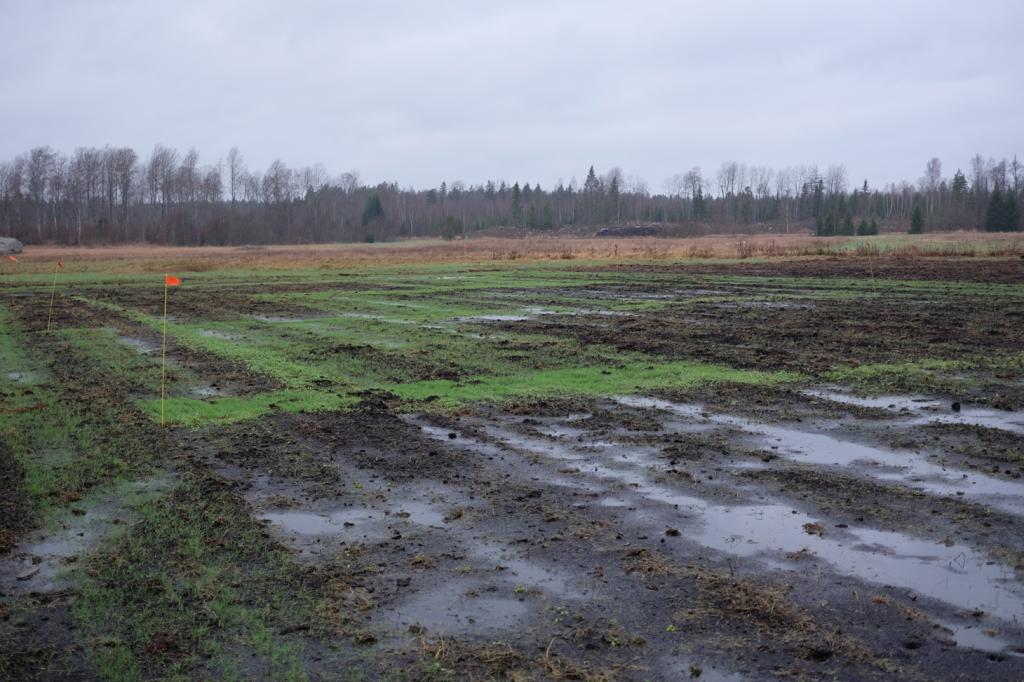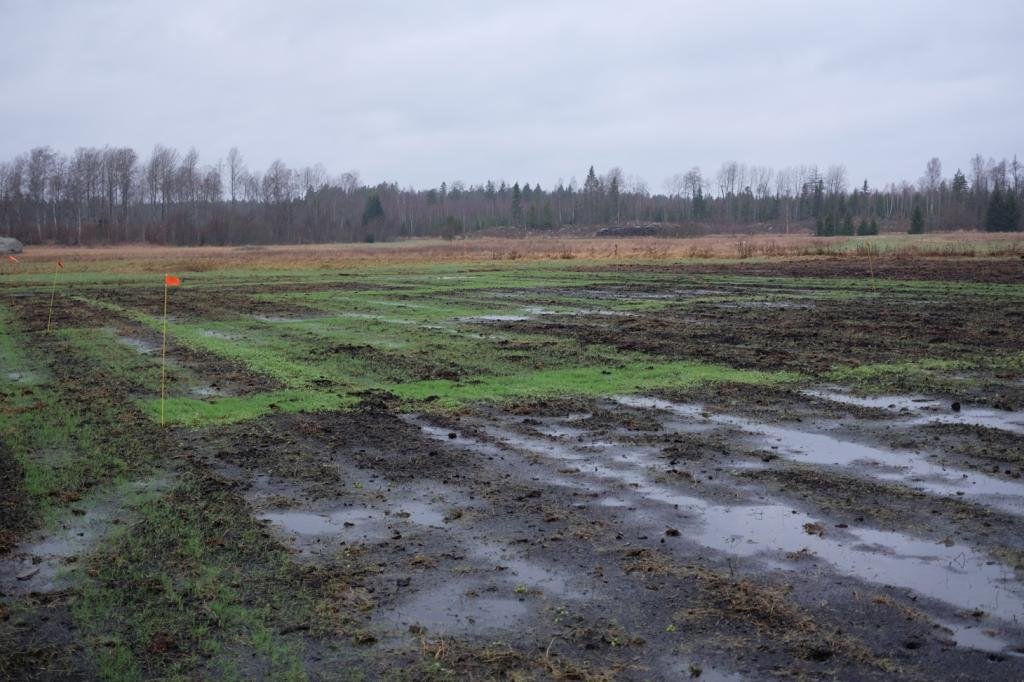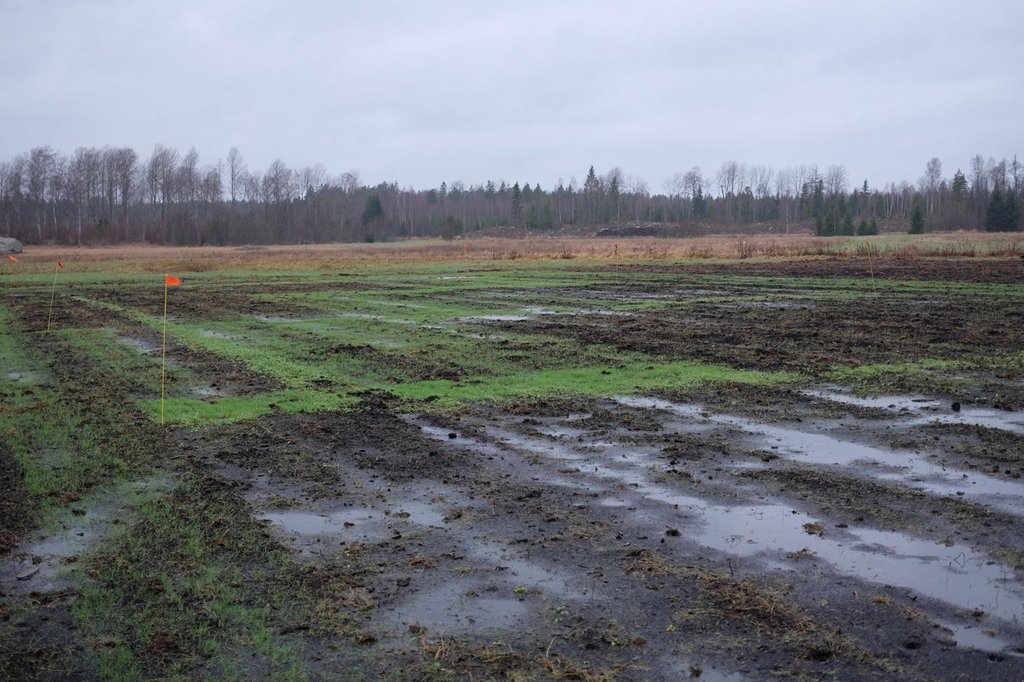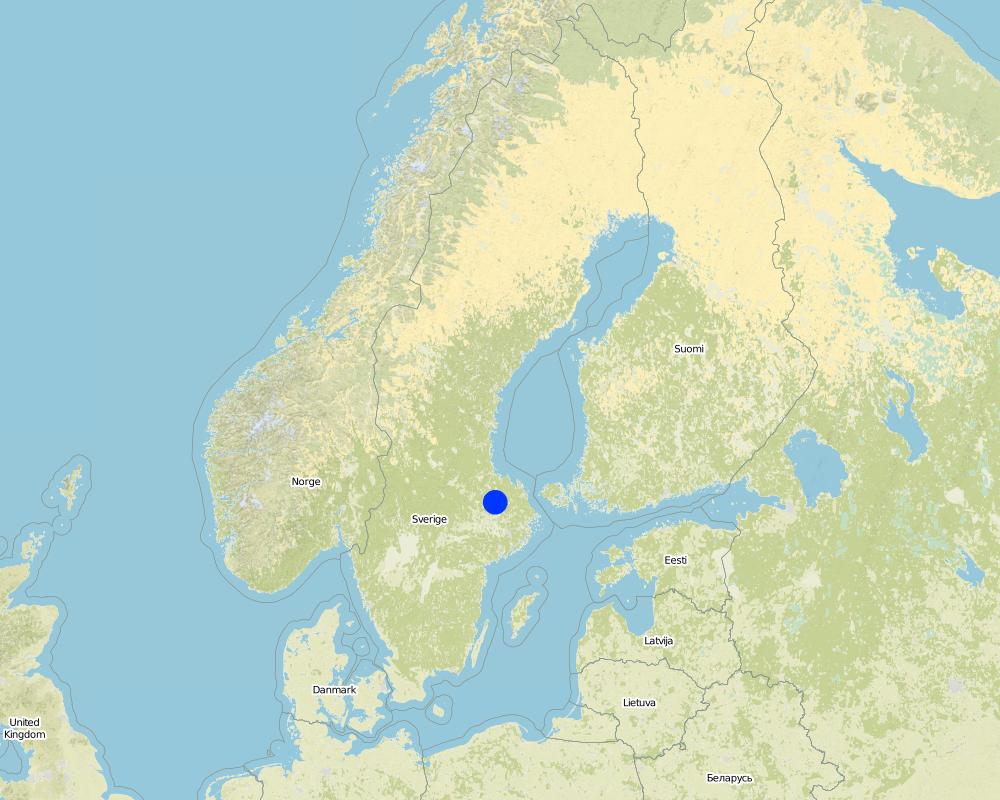Using water tolerant crops on cultivated peat soils, Recare [Sweden]
- Creation:
- Update:
- Compiler: Örjan Berglund
- Editor: –
- Reviewer: David Streiff
Grödval på odlade torvjordar
approaches_2667 - Sweden
View sections
Expand all Collapse all1. General information
1.2 Contact details of resource persons and institutions involved in the assessment and documentation of the Approach
Name of project which facilitated the documentation/ evaluation of the Approach (if relevant)
Preventing and Remediating degradation of soils in Europe through Land Care (EU-RECARE )Name of the institution(s) which facilitated the documentation/ evaluation of the Approach (if relevant)
Swedish Univ. of Agr.Sciences (Swedish Univ. of Agr.Sciences) - Sweden1.3 Conditions regarding the use of data documented through WOCAT
When were the data compiled (in the field)?
15/10/2015
The compiler and key resource person(s) accept the conditions regarding the use of data documented through WOCAT:
Ja
2. Description of the SLM Approach
2.1 Short description of the Approach
Using water tolerant crops might prolong the use of cultivated peat soils.
2.2 Detailed description of the Approach
Detailed description of the Approach:
Aims / objectives: To find crops that have a high yield even though the ground water level is high.
Methods: Compare Reed canary grass and Tall fescue with Timothy that normally is grown within this area.
2.3 Photos of the Approach
2.5 Country/ region/ locations where the Approach has been applied
Country:
Sweden
Region/ State/ Province:
Uppsala län
Further specification of location:
uppsala
Comments:
Field trial, 12 plots times 72 m2
Map
×2.6 Dates of initiation and termination of the Approach
Indicate year of initiation:
2014
Year of termination (if Approach is no longer applied):
2019
2.7 Type of Approach
- project/ programme based
2.8 Main aims/ objectives of the Approach
The Approach focused on SLM only
To find crops with high yield that can be grown on peat soils with high ground water table and low bearing capacity.
The SLM Approach addressed the following problems: To find an alternative use of these lands to postpone abandonment.
2.9 Conditions enabling or hindering implementation of the Technology/ Technologies applied under the Approach
social/ cultural/ religious norms and values
- hindering
What other crop to choose?
Treatment through the SLM Approach: Talking to the farmers to find crops they were interested in testing.
availability/ access to financial resources and services
- hindering
What to do with the new crop?
Treatment through the SLM Approach: Develop a local system that could use the crop for energy production or biogas production.
legal framework (land tenure, land and water use rights)
- enabling
The existing land ownership, land use rights / water rights greatly helped the approach implementation: Private farms can themself deside what crops to grow.
3. Participation and roles of stakeholders involved
3.1 Stakeholders involved in the Approach and their roles
- local land users/ local communities
not implemented, Field trial.
- SLM specialists/ agricultural advisers
- national government (planners, decision-makers)
3.2 Involvement of local land users/ local communities in the different phases of the Approach
| Involvement of local land users/ local communities | Specify who was involved and describe activities | |
|---|---|---|
| initiation/ motivation | passive | |
| planning | interactive | |
| implementation | interactive | |
| monitoring/ evaluation | passive | |
| Research | none |
3.4 Decision-making on the selection of SLM Technology/ Technologies
Specify who decided on the selection of the Technology/ Technologies to be implemented:
- mainly SLM specialists, following consultation with land users
Explain:
Land user came with suggestions of what crops to try, and we had our own idea of what crop to test. And we choose one from the land user and one crop from SLM
Decisions on the method of implementing the SLM Technology were made by mainly by SLM specialists with consultation of land users
4. Technical support, capacity building, and knowledge management
4.1 Capacity building/ training
Was training provided to land users/ other stakeholders?
Ja
- Not relevant, This is a field trial,
4.2 Advisory service
Do land users have access to an advisory service?
Ja
Describe/ comments:
This is a field trial. We are in the process of evaluating this.
4.3 Institution strengthening (organizational development)
Have institutions been established or strengthened through the Approach?
- no
4.4 Monitoring and evaluation
Is monitoring and evaluation part of the Approach?
Ja
Comments:
bio-physical aspects were regular monitored by project staff through observations; indicators: None
bio-physical aspects were regular monitored by project staff through measurements; indicators: None
economic / production aspects were regular monitored by project staff through observations; indicators: None
economic / production aspects were regular monitored by project staff through measurements; indicators: None
area treated aspects were regular monitored by project staff through observations; indicators: None
management of Approach aspects were regular monitored by project staff through observations; indicators: None
management of Approach aspects were regular monitored by project staff through measurements; indicators: None
There were no changes in the Approach as a result of monitoring and evaluation: None
There were no changes in the Technology as a result of monitoring and evaluation: None
4.5 Research
Was research part of the Approach?
Ja
- Agronomic, Soil Science
Give further details and indicate who did the research:
Research is ongoing by SLU and not evaluated yet.
Research was carried out on-farm
5. Financing and external material support
5.1 Annual budget for the SLM component of the Approach
Comments (e.g. main sources of funding/ major donors):
Approach costs were met by the following donors: international (Recare Project): 75.0%; government (Swedish University of Agricultural Sciences): 25.0%
5.2 Financial/ material support provided to land users
Did land users receive financial/ material support for implementing the Technology/ Technologies?
Nee
5.4 Credit
Was credit provided under the Approach for SLM activities?
Nee
6. Impact analysis and concluding statements
6.1 Impacts of the Approach
Did the Approach help land users to implement and maintain SLM Technologies?
- No
- Yes, little
- Yes, moderately
- Yes, greatly
This is what we are going to evaluate during the project.
6.2 Main motivation of land users to implement SLM
- increased production
Without new water tolerant crops to grow, the land is abandoned.
- increased profit(ability), improved cost-benefit-ratio
- aesthetic improvement
A cultivated field is much nicer to look at then abandoned fields.
6.3 Sustainability of Approach activities
Can the land users sustain what has been implemented through the Approach (without external support)?
- yes
6.4 Strengths/ advantages of the Approach
| Strengths/ advantages/ opportunities in the land user’s view |
|---|
| It is easy to implement. The farmer already have all machines and equipments. |
| Strengths/ advantages/ opportunities in the compiler’s or other key resource person’s view |
|---|
| It is easy to implement. The farmer already have all machines and equipments. |
6.5 Weaknesses/ disadvantages of the Approach and ways of overcoming them
| Weaknesses/ disadvantages/ risks in the land user’s view | How can they be overcome? |
|---|---|
| Maybe it will be hard to sell the crop with a profit. |
| Weaknesses/ disadvantages/ risks in the compiler’s or other key resource person’s view | How can they be overcome? |
|---|---|
| It might not be a crop that has a high demand. |
7. References and links
7.1 Methods/ sources of information
- field visits, field surveys
Links and modules
Expand all Collapse allLinks
No links
Modules
No modules





